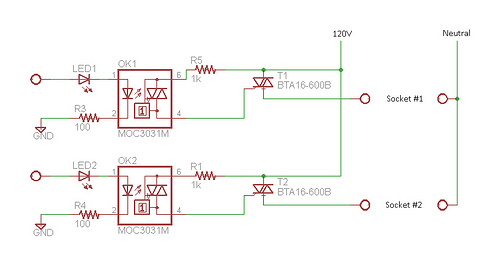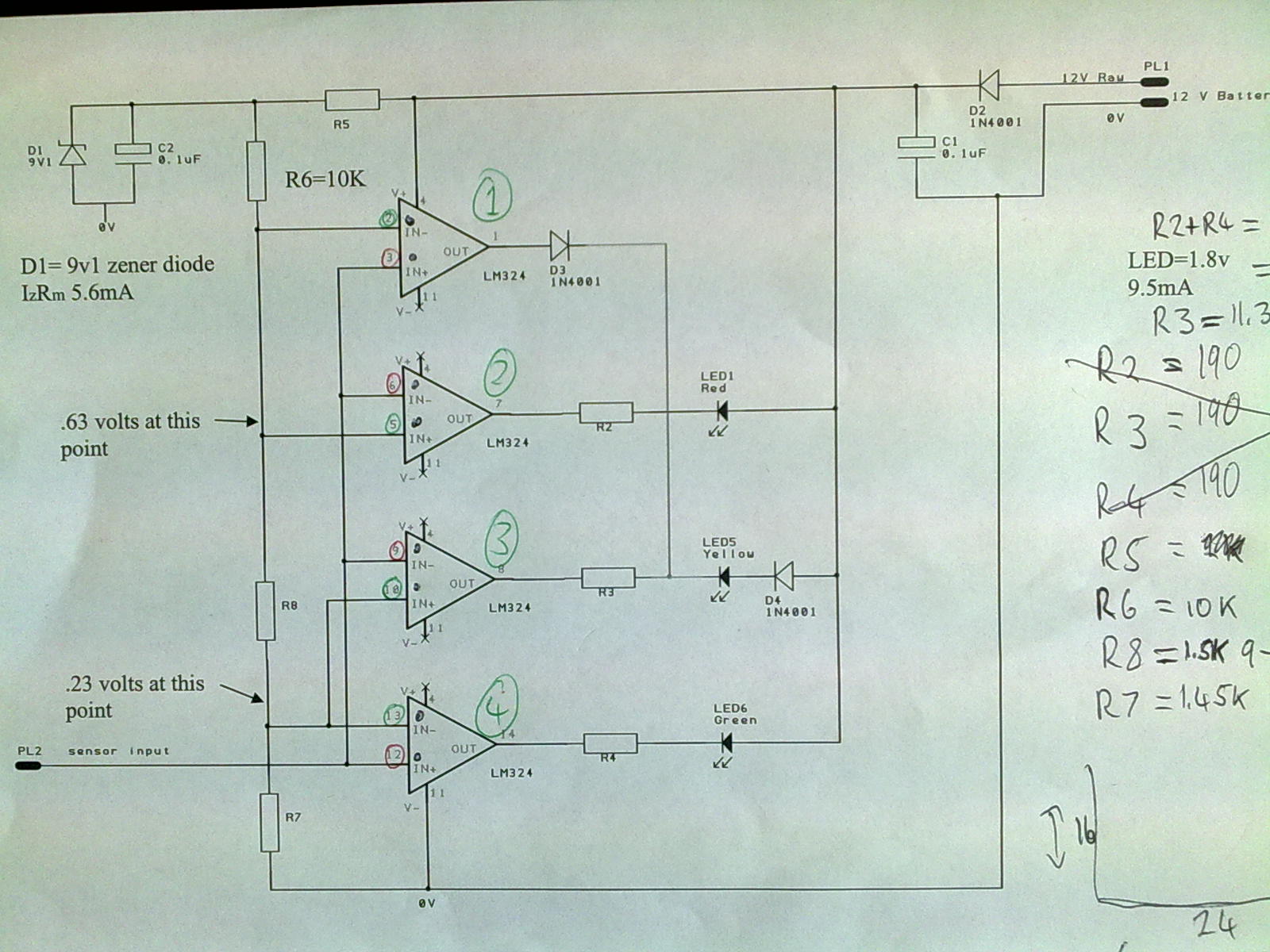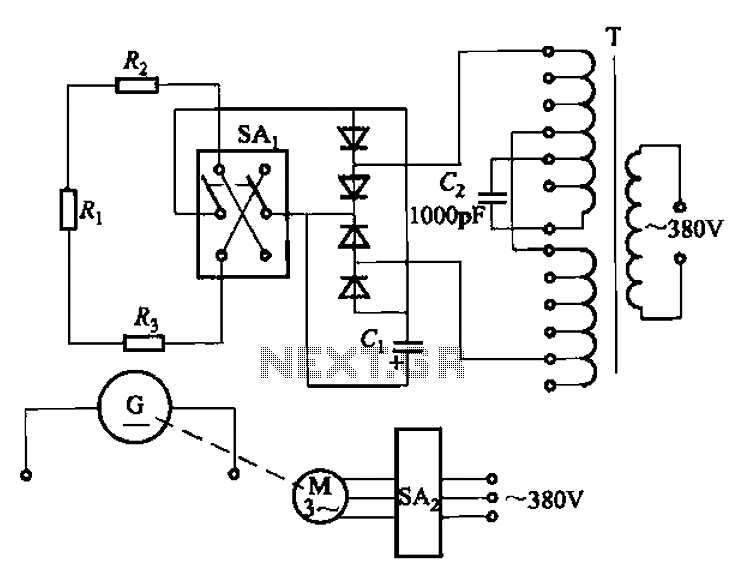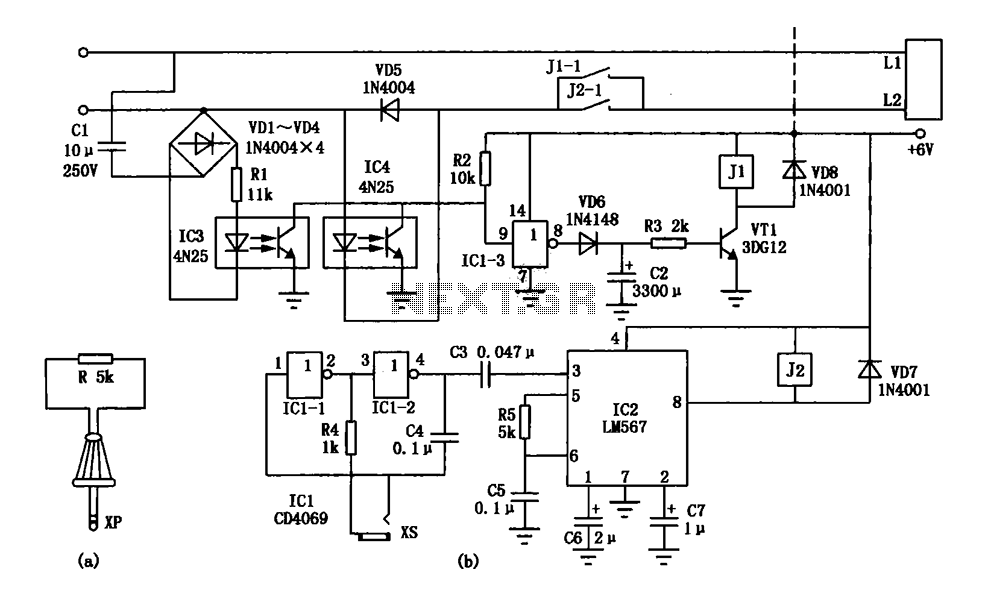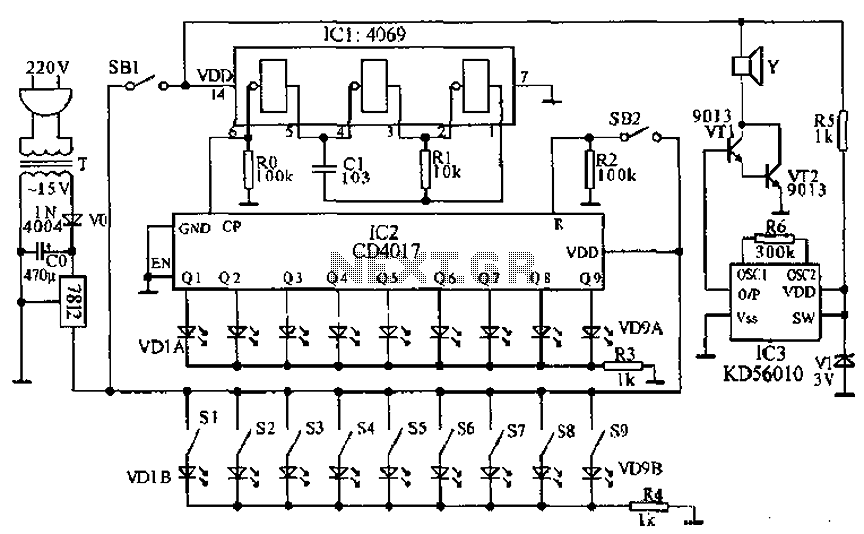
Heating System Thermostat Circuit

Controlled by indoor and outdoor temperature, this circuit features a simple and highly reliable design. It is intended to control a heating system or central heating plan.
The described circuit functions as a temperature control system, integrating both indoor and outdoor temperature sensors to maintain optimal heating conditions. The primary components of this circuit typically include temperature sensors, a microcontroller or comparator, relays or solid-state switches, and a power supply.
The indoor temperature sensor monitors the current temperature within the living space, while the outdoor temperature sensor assesses external conditions. The microcontroller processes the data from both sensors to determine whether to activate or deactivate the heating system. This decision is based on pre-defined temperature thresholds that can be adjusted according to user preferences or seasonal requirements.
For actuation, the circuit employs relays or solid-state switches, which are responsible for controlling the power supplied to the heating elements, such as electric heaters or a boiler. The reliability of the design is enhanced through the use of robust components and the implementation of fail-safes to prevent overheating or system failure.
Additionally, the circuit may incorporate features such as a user interface for temperature setting adjustments, LED indicators to signal system status, and communication interfaces for integration with smart home systems. Overall, this temperature control circuit is designed to ensure efficient operation and comfort in heating applications, adapting to varying environmental conditions.Controlled by indoor and outdoor temperature, Simple, high reliability design This circuit is intended to control a heating system or central heating plan.. 🔗 External reference
The described circuit functions as a temperature control system, integrating both indoor and outdoor temperature sensors to maintain optimal heating conditions. The primary components of this circuit typically include temperature sensors, a microcontroller or comparator, relays or solid-state switches, and a power supply.
The indoor temperature sensor monitors the current temperature within the living space, while the outdoor temperature sensor assesses external conditions. The microcontroller processes the data from both sensors to determine whether to activate or deactivate the heating system. This decision is based on pre-defined temperature thresholds that can be adjusted according to user preferences or seasonal requirements.
For actuation, the circuit employs relays or solid-state switches, which are responsible for controlling the power supplied to the heating elements, such as electric heaters or a boiler. The reliability of the design is enhanced through the use of robust components and the implementation of fail-safes to prevent overheating or system failure.
Additionally, the circuit may incorporate features such as a user interface for temperature setting adjustments, LED indicators to signal system status, and communication interfaces for integration with smart home systems. Overall, this temperature control circuit is designed to ensure efficient operation and comfort in heating applications, adapting to varying environmental conditions.Controlled by indoor and outdoor temperature, Simple, high reliability design This circuit is intended to control a heating system or central heating plan.. 🔗 External reference
